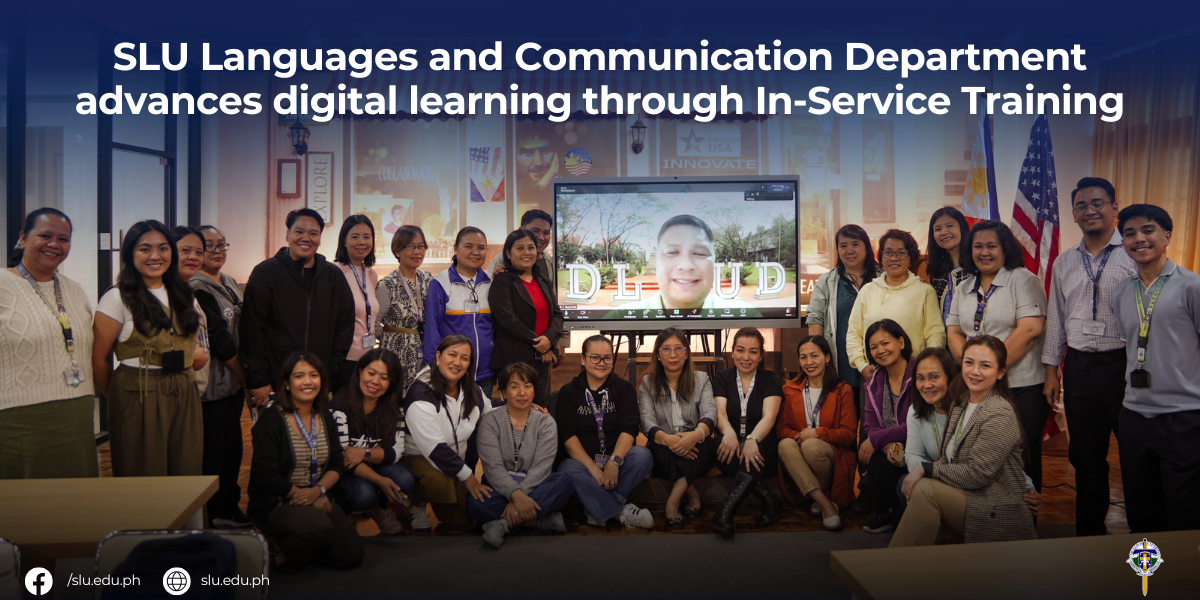With the theme “Teaching Tomorrow: Integrating Cognitive Diversity and Intelligent Technology for Language and Communication Classrooms,” the faculty members of the Languages and Communication (LangComm) Department of the Saint Louis University (SLU) School of Teacher Education and Liberal Arts (STELA) gathered at the American Corner, Msgr. Charles Vath Library Building, SLU Main Campus for the 1st phase of their In-Service Training (INSET) held on 20 October 2025.
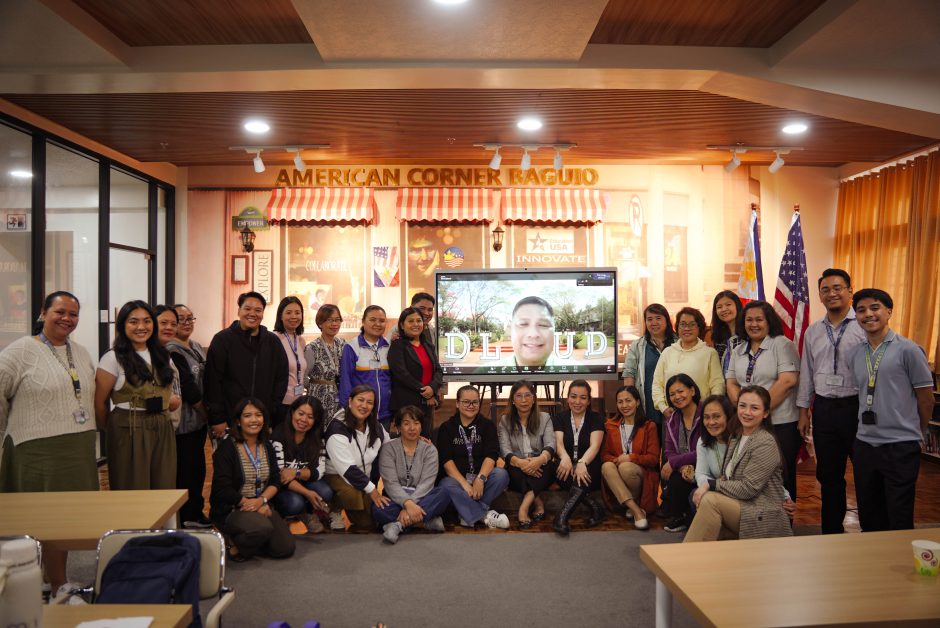
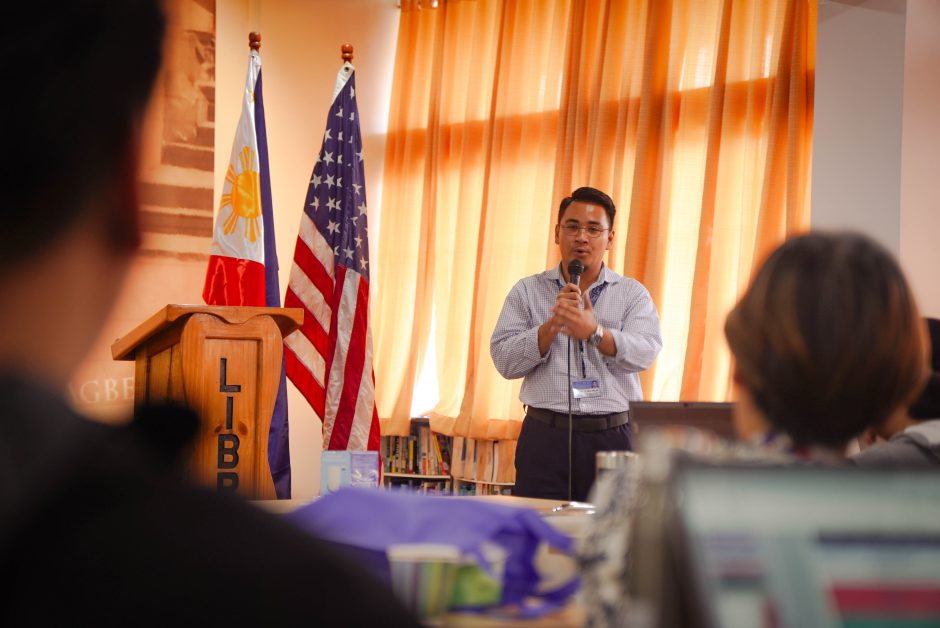
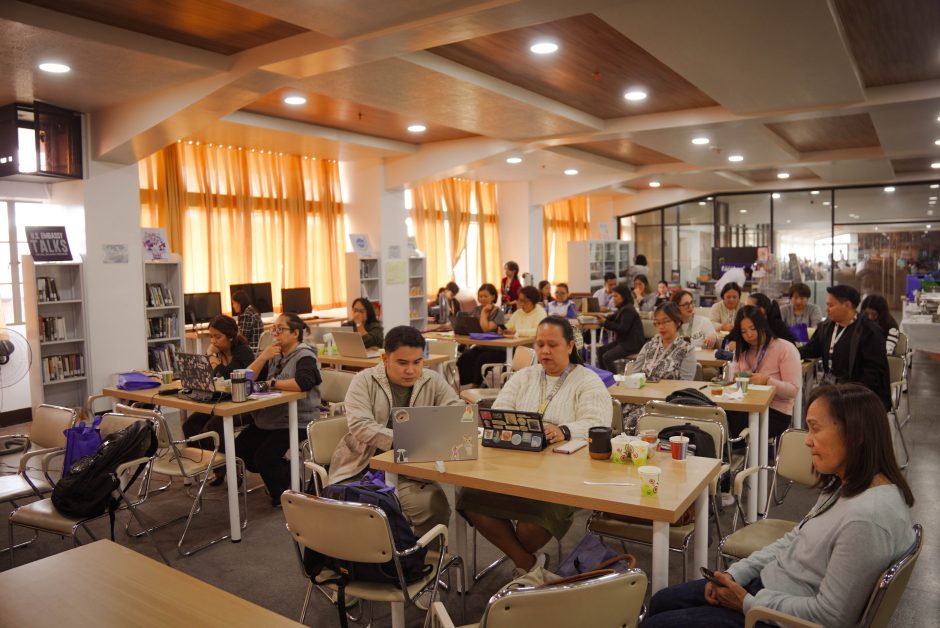
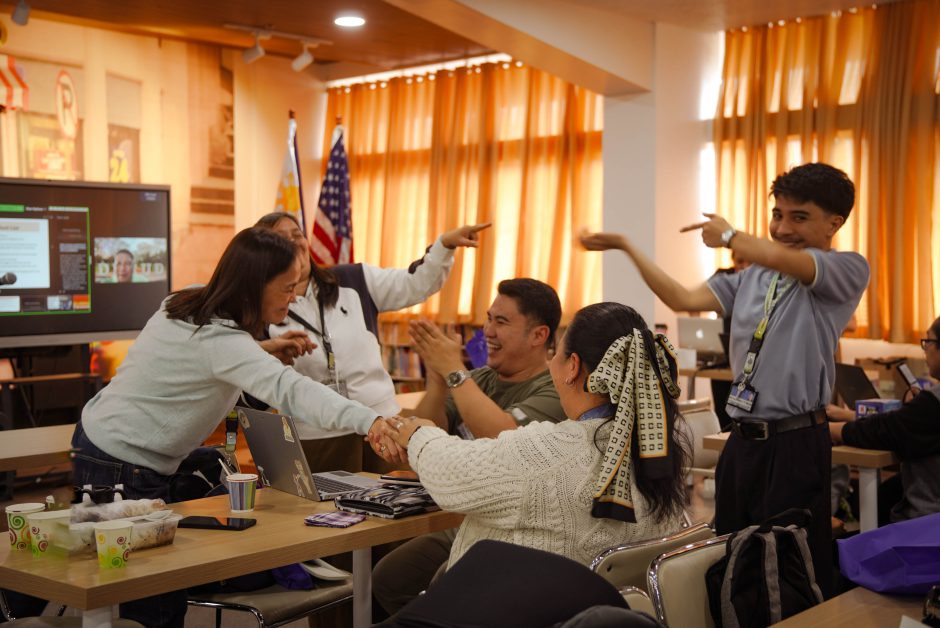
The session started off with the opening remarks of STELA Dean, Mary Pauline E. Namoca, RPsy, PhD, where she emphasized the importance of making classrooms “more inclusive and innovative for the students.” She further stated that the session is what the department needs to navigate the digital space during the emergence and rise of Artificial Intelligence (AI) in educational institutions and educational work.
This was then followed by an overview of the activities by the LangCom Department Head, Joselita M. Ferrer, LPT, PhD, wherein she mentioned that in accordance with the United Nations Educational, Scientific and Cultural Organization (UNESCO) Media and Information Literacy (MIL) Week, with the theme “Minds Over AI.” In connection to this celebration, Dr. Ferrer highlighted that numerous topics are geared to “explore intentional integration of the Kinds of Thinking with AI-driven adaptive technologies.”
As the host and partner of this INSET Session, Director of the University Libraries, Joey Gapasin, shared the importance of SLU Library’s American Corner. Highlighting the different resources, linkages, and opportunities made available through the American Corner, Ma’am Gapasin mentioned that all this was made possible through their partnership between the Public Affairs Section of the U.S. Embassy and Saint Louis University.
Introducing the keynote speaker, Janet S. Tibaldo, PhD, then shared the profound background of the esteemed guest, Mr. Marco M. Polo, PhD, who is currently an Associate Professor at the Communication and Journalism Department (CJD) and a Faculty Lecturer at the School of Governance, Public Service and Corporate Leadership at De La Salle University-Dasmarinas (DLSU-D).
Lecture 1: Ways of Thinking to Teaching
Dr. Polo started with an activity titled “Self-Introductions.” The participants shared something about themselves using eight different self-introductions. The first session, titled “Foundations of Thinking Styles,” then followed. This topic introduced the participants to the eight different thinking styles of students, where Dr. Polo provided details on how these styles impact their learning and how the LangComm teachers are able to apply different teaching methods for each different style.
The second topic, “Applications for Teachers,” then commenced, which was an in-depth discourse on how the different thinking styles could be applied to their discussions, activities, and tasks given to their students. This knowledge was then further enriched with a group activity named “Thinking Hats,” where the participants worked together in applying what they learned from the first two sessions with problems they have encountered throughout their teaching journey.
Lecture 2: Intelligent Technology for the Classroom
After a brief break, the INSET session veered towards the 21st Century landscape, focusing on the necessary skills and competencies needed, such as new teaching technologies, critical thinking, problem solving, adaption, digital literacy, and many more, with a specification on Artificial Intelligence (AI) in Tertiary Education. Their newfound knowledge and skills were tested with a series of questions from the speaker, strengthening their foundations and added skills in teaching.
After the sessions, Jara Bueno, BA Communication instructor, shared her insights on her learnings: “Compared to the other Language and Communication faculty, I didn’t have the same upbringing into the educational world. So the teaching style, the methodologies, the standard practices aren’t exactly what I’m accustomed to. I came from the industry, and I wanted to transfer that knowledge in the best way possible. So this training and program right here was my best opportunity to do that. To understand where the gaps are in my teaching skills and my teaching techniques in order for me to fully deploy all learnings that my students can benefit from in every class that I handle.”
Ms. Bueno then mentioned that her main takeaway was how she would connect her teaching style to the learning strategies of the students and how she would be able to maximize the benefits of every session of her class.
Dr. Ferrer then further explained that the In-service Training is held “as part of our professional growth.” To further the knowledge and skills of the department staff, Dr. Ferrer mentioned that a second phase of the INSET will be conducted that will focus on hands-on training and practical application activities. Moreover, Massive Open Online Courses (MOOC) will be provided tackling academic writing and AI in collaboration with the American Corner.
“For today’s INSET, it’s a collaboration with LangComm because we have a MOOC program activity that’s really for the youth. But when the English teachers have the intention of having the MOOC, and we already have the specific MOOC for them. So, it’s high time for us to push it through. Then, knowing that there is a speaker having AI literacy for teachers, we grabbed the opportunity to collaborate with the teachers,” said American Corner Coordinator Michelle Ambloza of the University Libraries, providing more details on what the LangCom department could look forward to in the coming months.
The first phase of the Languages and Communication Department’s INSET indeed marked a step into preparing the faculty members toward an evolving technological landscape in the academe. With the integration of the different thinking styles and and intelligent technologies, the department strengthens their commitment to providing quality education for the studentry.
This particular In-service Training had the goal of addressing the following Sustainable Development Goals (SDGs) as set by the United Nations (UN): Quality Education (SDG 4), Decent Work and Economic Growth (SDG 8), Responsible Consumption and Production (SDG 12), and Peace, Justice, and Strong Institutions (SDG 16). (Article by Carl Joseph Madlaing, SLU Communication Society | Photos by SLU Communication Society)

